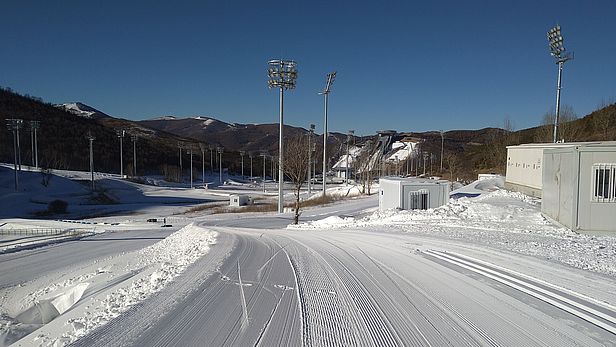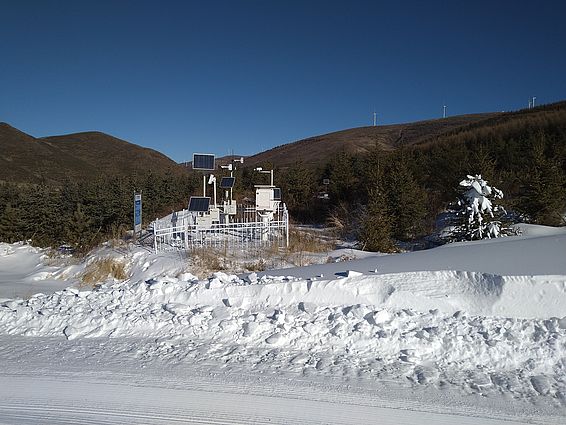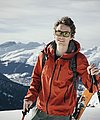As at the last three Winter Olympics, the WSL Institute for Snow and Avalanche Research (SLF) will be assisting the Swiss-Ski support crews in Beijing. Aside from the skiing and snowboard teams, the main beneficiaries will be the cross-country and biathlon teams. Each support team will be given a map of the course showing the forecast snow surface temperatures during their respective events.
The Olympic Winter Games are taking place in China from 4 to 20 February 2022. For athletes, these games are the pinnacle of their sporting careers. Whether the likes of Dario Cologna, Nadine Fähndrich, Benjamin Weger and Selina Gasparin will emerge victorious depends on a range of factors, but one of them is the optimal preparation of their skis. Applying the right ski wax is crucial, especially in the Nordic disciplines of cross-country skiing and biathlon. Cross-country skis need to glide well on the snow, and different snow temperatures require different ski waxes and grinds. These factors are less significant in the Alpine skiing events, where the higher speeds mean that streamlined ski suits and body positions are at least as important. Also, Nordic skiers are out on the course for much longer than their Alpine counterparts, so even the smallest differences can add up over the entire race. It is therefore essential that skis are correctly waxed. However, this requires the support teams to have an exact understanding of the snow and weather conditions prevailing at the time of the competition. At the behest of Swiss Olympic, Fabian Wolfsperger will be calculating what the snow conditions will be like on the race course on each day of the competition. This is a key insight for the Swiss support teams and will help them wax the skis to best effect.
Challenging competition venue ¶
Winters at the competition venue, around 180 km from Beijing, are cold and dry, with very little snowfall. That is why for the most part the athletes will be competing on pistes covered in artificial snow – or 'technical snow', to use the jargon. Beijing is roughly the same latitude as Naples. Being this far south means that the sun in February can already be quite high in the sky and can melt the snow during the day. The modelling of the courses is based on digital elevation models and weather forecasts. Since high-resolution terrain models are not readily available in China, simplified models based on satellite images and maps provided by the organisers had to be used and optimised accordingly. Fabian Wolfsperger travelled to the competition site for a few days in December 2021 to verify these terrain models. While there, he measured the cross-country and biathlon courses using GPS and was able to check the routes and, among other things, verify the gradients of sloping sections of the trails. He then combined the models with the weather forecasts and checked the calculated snow temperatures on site the next day by taking measurements on the courses.
Putting scientific models into practice ¶
Using two computer models developed at the SLF, Alpine 3D and SNOWPACK, as well as detailed weather forecasts, Fabian will produce daily maps of the race tracks showing the snow conditions for the following day, including the snow surface temperatures at different times, such as 9, 10 and 11 a.m. The change in the snow surface temperature over the course of the day, which is mainly dictated by the weather, indicates what the conditions will be like the next day. Will they be the same as or different from the previous days? What will the temperature be on each slope? A key factor in Beijing will be when the snow reaches a temperature of 0 °C and starts to melt, as this will prompt a sudden change in conditions on the course. It remains to be seen whether the forecast maps will help Swiss athletes ski to victory and fly home jubilant, with medals around their necks. "I hope that I can contribute in some small way to our athletes' success with my scientific work," says Fabian.
Contact ¶
Links ¶
Copyright ¶
WSL and SLF provide the artwork for imaging of press articles relating to this media release for free. Transferring and saving the images in image databases and saving of images by third parties is not allowed.




